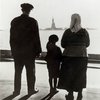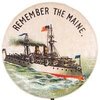Decennial Census Historical Facts
Decennial Census Historical Facts
Censuses are not conducted in a vacuum. They occur amidst internal and external crisis, shifts in cultural interests, and events that become "defining moments" for each decade. Census data reflect the growth of the population as well as the changing values and interests of the American people.
Decennial Historical Facts provides a portrait of the United States both statistically and culturally in the following four areas:
- Pop Culture – key milestones from the decade following the census.
- Population
- Census Details
- 10 Largest Urban Places
1890
ICONS: Ellis Island, Chicago World Columbian Exposition, USS Maine



Population
| 62,979,766 | U.S. Resident Population |
| 17.8 |
Population per square mile of land area |
| 25.5 |
Percent increase of population from 1880 to 1890 |
| 42 |
Number of States |
10 Largest Urban Places
| Rank |
Place |
Population |
|---|---|---|
| 1 |
New York City, NY | 1,515,301 |
| 2 |
Chicago, IL | 1,099,850 |
| 3 |
Philadelphia, PA | 1,046,964 |
| 4 |
Brooklyn, NY | 806,343 |
| 5 |
St. Louis, MO | 451,770 |
| 6 |
Boston, MA | 448,477 |
| 7 |
Baltimore, MD | 434,439 |
| 8 |
San Francisco, CA | 298,997 |
| 9 |
Cincinnati, OH | 296,908 |
| 10 |
Cleveland, OH | 261,353 |
Pop Culture
- Photographer Jacob Riis publishes How the Other Half Lives, in 1890, documenting the horrible living conditions immigrants faced living in New York City's tenements.
- Wyoming and Idaho are admitted as the 43rd and 44th states in July 1890.
- Pyotr Ilyich Tchaikovsky conducts the first performance at New York's Carnegie Hall on May 5, 1891.
- The Ellis Island Immigration Station begins processing immigrants to the United States on January 1, 1892.
- More than 25 million people visit the 1893 Chicago World Columbian Exposition between May 1 and October 30, 1893.
- On September 20, 1893, the Duryea Brothers road-test the first-ever, American-made, gasoline-powered automobile in Springfield, Massachusetts.
- On August 28, 1894, Congress passes the first graduated income tax. The U.S. Supreme Court declares the "direct tax" unconstitutional the following year.
- Ex-slave and civil rights advocate Frederick Douglass dies on February 20, 1895.
- The first U.S. Golf Open is held in Newport, RI, on October 4, 1895.
- The last great North American "Gold Rush" begins on April 6, 1896 when gold is discovered in the Yukon District of Canada.
- William McKinley is inaugurated as the 25th President of the United States on March 4, 1897.
- The battleship USS Maine explodes in Havana, Cuba's harbor on February 15, 1898.
- Fighting erupts between the United States and Philippine revolutionary forces on February 4, 1899. The "Philippine Insurrection" would officially end on July 4, 1902.
- The United States annexes Hawaii on July 7, 1898.
Page Last Revised - October 8, 2021




